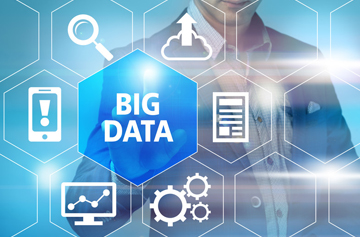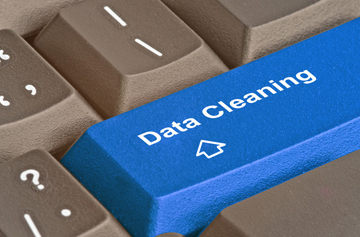 In this epoch of Information Technology, there is massive production of data every millisecond and it is helping brands promote themselves and get to their customers. Terms like big data and cloud are becoming so common and literally there is no existence without these two for businesses and individuals alike. With the advent of big data and cloud, businesses have seen a large amount of data coming in, and this has largely influenced the way they run and approach their experience. But with every boon, comes a curse. With this large amount of data collected, there sure will be a lot of bad or unreliable data. To extract good data from this hybrid data, businesses need data cleansing services.
In this epoch of Information Technology, there is massive production of data every millisecond and it is helping brands promote themselves and get to their customers. Terms like big data and cloud are becoming so common and literally there is no existence without these two for businesses and individuals alike. With the advent of big data and cloud, businesses have seen a large amount of data coming in, and this has largely influenced the way they run and approach their experience. But with every boon, comes a curse. With this large amount of data collected, there sure will be a lot of bad or unreliable data. To extract good data from this hybrid data, businesses need data cleansing services.
So What Is Big Data?
Long gone are the days when businesses found it hard to handle a large amount of data. With the invention of cloud servers, individuals and businesses are able to store and manage their data effectively. Another very important invention is Big Data. Big Data is simply an amount of data – both structured and unstructured – generated on a daily basis and provides valuable insights to businesses to make better marketing decisions.
Any ‘bad’ or inconsistent data can lead to false or misleading conclusions and can affect investments in a very negative manner. For example, in business, incorrect data in big data such as in customer database can cost them their customers and lead to wasted time and effort sending mails. Another instance is when the government wants to analyze its census figures to make crucial decisions in investment on infrastructure. If the data is incorrect, it will affect the decisions in the long run. If using the right data, big data can help businesses in many ways. It helps them improve their operation margins and the information transparency helps bridge the gap between customers and organizations.
Data Issues
There are many types of errors that can be found in big data – repetition, incorrect entries, missing entries and aliasing are some of them. Finding these errors before you store it in the cloud is always advisable than storing the data first and then cleansing.
- No validation, case sensitivity: It is a must that any data is validated before finally submitting in the database. Often, data is not validated properly during data entry. There could be many inconsistencies such as phone numbers written with or without spaces, using letters instead of numbers and so on. The same phone number can have many variations in the database.
- Different sources of data: Data will arrive from inside and outside of the organization. These will be unstructured and need cleansing when combining them together.
- Names, dates, location: There are different ways to write a name – it just needs to be pronounced correctly (James N. Matthews; or Matthews, James N; or Matthews, and so on). Same with dates. From writing 26/11/2018 to 26th Nov. 2018 to 11/26/2018, everything holds the right value. One particular location may have 2 or more names, or its abbreviations: USA; or even United States of America or just United States.
- Numbers: Dots and commas may play a different role in writing numbers in different countries.
- Different languages: Data related to names, addresses, and other important details may arrive in various languages, which may have to be standardized.
- Different currencies: You may find financial data arriving in different currencies. This data may have different monetary value, symbols, or codes that may need to be consolidated together.
- Other issues: These include spelling and grammatical errors, upper/lower case ambiguity, abbreviations and so on.
Big Data Cleansing
Big Data will always include ‘bad’ data and it is the role of data scientists to clean this up. According to a survey, data scientists spend 19% of their time assembling data sets and 60% time cleaning and organizing this data. This accounts for almost 80% of their time for managing data for analysis. Data cleansing is, undoubtedly, a time-consuming, complex and multi-stage process. Instead of manually cleaning the bad data, data scientists can spend their quality time building applications on a pre-existing machine learning algorithm and integrate deep learning in artificial intelligence to discern errors in big data.
These are some of the common cleansing methods currently in use:
- Algorithms: Algorithms that help data scientists in checking spellings and phonetics can be used to fix data to some extent.
- Cleansing tools: IBM, Oracle, SAS, Talend etc. provide data cleansing tools for businesses.
- Histograms: Running histograms on big data will help identify values that occur less frequently and could be invalid. These values can then be updated. This could be difficult with Hadoop that doesn’t provide update functionality.
- Manual: However advanced and complex some applications and algorithms are, there will still be a need for humans to interfere to fix the data.
- Conversion tables: Conversion tables can be used in instances where certain data issues are already known. These include terms such as US that are written out in several different ways. The data is first sorted by the relevant key, lookups can be used to make the conversions, and the results are stored for further use.
Also Read: Best Steps to Reduce Data Integrity Risks
Big data cleansing is an inevitable process for any organization as it helps in giving insights in many business-related aspects, especially customer behaviour. Though there are many tools that can help businesses clean their big data, there are data cleansing companies that can provide speedy and reliable big data cleansing; the latter is a more cost-effective and time-saving option.




